Live on the homepage now!
Reader Supported News
The Times of London reported Monday that Abramovich, a close ally of Putin acting as Russia’s envoy to Ukrainian negotiators, last week met Putin in Moscow and presented him with a handwritten note from Zelenskyy outlining the conditions he would consider in order to reach a cease-fire agreement.
Though the newspaper did not disclose the exact contents of the alleged note, The Times said Putin’s response was unequivocally clear: "Tell him I will thrash them." Fox News has not verified the report.
Abramovich, who along with two top Ukrainian diplomats reportedly suffered a suspected poisoning in Kyiv earlier this month, was present in person Tuesday in Istanbul, Turkey, where another round of talks between Ukrainian and Russian delegations happened for the first time in nearly three weeks.
His exact role in the talks was unclear, as the Kremlin has stressed Abramovich is not an official member of the delegation in Istanbul but has been serving as a go-between for the Russian and Ukrainian sides.
Ukraine’s ambassador to the United Kingdom, Vadym Prystaiko, was critical of Abramovich’s presence at the talks hosted at the Dolmabahce Palace, commenting to the BBC on Tuesday, "I don't know if he's buying his way out somehow or if he's really useful, that's very difficult to tell."
The Wall Street Journal and Netherlands-based investigative group, Bellingcat, both reported about the suspected poisoning on Monday, saying Abramovich, Ukrainian lawmaker Rustem Umerov and another negotiator had all experienced symptoms that included red eyes, constant and painful tearing, and peeling skin on their faces and hands following a March 3 meeting in Kyiv.
The reports said the conditions of the three men have since improved and their lives weren’t in danger.
But contacted by Fox News, a spokesman for Zelenskyy’s office denied reports about the poisoning, as did Kremlin spokesman Dmitry Peskov, who told Russian media the reports were false and part of an "information war." Umerov tweeted, "I’m fine," Monday, warning not to trust "unverified information."
Still, BBC reported that Ukrainian Minister of Foreign Affairs Dmytro Kuleba said on Ukrainian TV hours before Tuesday’s talks in Istanbul that he advised colleagues not to eat or drink anything.
The Russian government has previously been accused of poisoning perceived dissenters. The Kremlin has been tied to the 2020 nerve agent attack on Russian opposition leader Alexei Navalny in Siberia, the 2018 nerve agent attack on Sergei Skripal, a former Russian military officer who defected to the U.K., and his daughter Yulia, and the 2004 poisoning of pro-Western Ukrainian presidential candidate Viktor Yushchenko, who was left permanently disfigured following the attack.
Speaking at a press conference in Morocco Tuesday, Secretary of State Antony Blinken said there’s "concern" of reports about the poisoning due to Russia’s "track record" with Navalny and others.
Abramovich, the owner of Chelsea football club, has been sanctioned by the U.K. and the European Union, but the Journal previously reported that Zelenskyy asked the U.S. not to sanction Abramovich due to his role in facilitating talks and his growing interest in humanitarian issues, including potentially organizing civilian evacuations from the besieged Mariupol, so the U.S. Treasury paused plans to do so.
Russian state-run news agency Ria Novosti published a photo Tuesday showing Abramovich speaking with Turkish President Recep Tayyip Erdogan and Foreign Minister Mevlut Cavusoglu at the meeting.
The BBC noted that Abramovich, who also holds Israeli and Portuguese citizenship and owns a minority stake in the steel company Evraz PLC, was seen on Turkish television coverage of the talks listening to a translation through headphones while sitting next to Erdogan’s spokesman Ibrahim Kalin at a separate table from the main delegations on Tuesday.
As talks were underway Tuesday, Russian Deputy Defense Minister Alexander Fomin told reporters in Moscow that his country has agreed to "fundamentally cut back military activity in the direction of Kyiv and Chernihiv" in order to "increase mutual trust for future negotiations to agree and sign a peace deal with Ukraine," according to the Financial Times. The announcement did not signal any relief, however, for the besieged cities of Odesa or Mariupol, which have suffered heavy Russian bombardment.
 A sign is pictured outside a Google office near the company's headquarters in Mountain View, California. (photo: Reuters)
A sign is pictured outside a Google office near the company's headquarters in Mountain View, California. (photo: Reuters)
Roskomnadzor said Google could be fined up to 8 million roubles ($91,533), or as much as 20% of the company's annual revenue in Russia for repeat offences.
It said YouTube had become one of the key platforms in the "information war" against Russia.
Google did not immediately respond to an emailed request for comment.
Russia has restricted access to Twitter and Meta Platforms' flagship Facebook and Instagram services since sending troops into Ukraine on Feb. 24, as a simmering dispute with U.S. technology giants has escalated into a battle to control information flows.
YouTube, which has blocked Russian state-funded media globally, is under heavy pressure from Moscow, which earlier this month accused it of spreading what it called threats against Russian citizens.
"The American platform openly enables the spread of false content, containing inaccurate publicly significant information about the course of the special military operation in Ukraine, discrediting the armed forces of the Russian Federation, as well as information of an extremist nature with calls for violence against Russian servicemen," Roskomnadzor said.
Russia last week said Meta was guilty of "extremist activity", something the company's lawyer denied in a Moscow court.
Russia launched what it calls a special operation in Ukraine to degrade its neighbour's military capabilities and root out people it called dangerous nationalists.
Ukrainian forces have mounted stiff resistance and the West has imposed sweeping sanctions on Russia in response.
($1 = 87.4000 roubles)
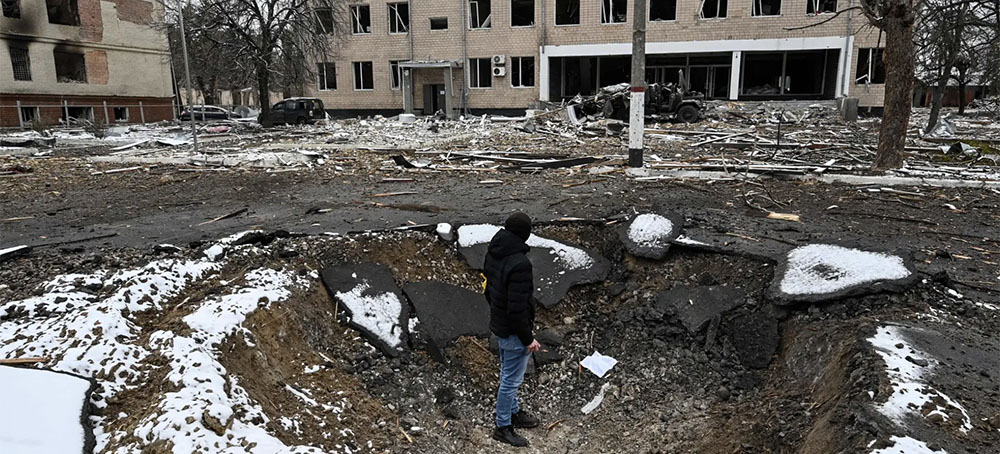 A Ukrainian woman recounts being raped by Russian soldiers who killed her husband: 'Shall we kill her or keep her alive?' (photo: Getty Images)
A Ukrainian woman recounts being raped by Russian soldiers who killed her husband: 'Shall we kill her or keep her alive?' (photo: Getty Images)
On Monday, The Times of London published an interview with an anonymous woman the newspaper identified as being at the center of the investigation. It said she was 33 and had lived with her 35-year-old husband and 4-year-old son near the village of Shevchenkove outside the Ukrainian capital, Kyiv.
The woman told The Times that on March 9 she and her husband approached a group of Russian soldiers outside their home and found that the troops had killed the family's dog. She said the troops later searched the area for gasoline, with one of the soldiers apparently apologizing for the dog's death.
After dark, she said, she and her husband again heard something outside, and her husband walked out.
"I heard a single shot, the sounds of the gate opening, and then the sound of footsteps in the house," the woman told The Times.
She said one of the men from earlier — apparently the group's commander — had returned with one other man, who appeared to be in his 20s.
"I cried out, 'Where is my husband?'" she said. "Then I looked outside and I saw him on the ground by the gate. This younger guy pulled gun to my head and said: 'I shot your husband because he's a Nazi.'"
The woman told The Times she told her 4-year-old son to hide in the boiler room where they had been sheltering. She said the two soldiers then took turns raping her as her son cried in the next room.
"He said 'you'd better shut up or I'll get your child and show him his mother's brains spread around the house,'" she told The Times, adding: "All the time they held the gun by my head and taunted me, saying, 'How do you think she sucks it? Shall we kill her or keep her alive?'"
There have been other reports of sexual violence and rape during Russia's invasion of Ukraine, but last week Ukraine's prosecutor general announced the first investigation into one of them. Earlier this month, Lesia Vasylenko, a member of Ukraine's parliament, talked to UK officials about the rising reports of rape.
"We have reports of women being gang-raped. These women are usually the ones who are unable to get out. We are talking about senior citizens," The Guardian quoted Vasylenko as saying. "Most of these women have either been executed after the crime of rape or they have taken their own lives."
The woman interviewed by The Times said she and her son ultimately fled, leaving the home her husband built for them and his body behind. She said she hadn't yet told her son that his father died. "We cannot bury him, we can't get to the village, because the village is still occupied," she said.
She said she didn't know whether she'd return even if the area were to be liberated. "Memories are hard," she told The Times. "I don't know how I will live with all of it, but I still understand that my husband built this house for us. I would never be able to bring myself to sell it."
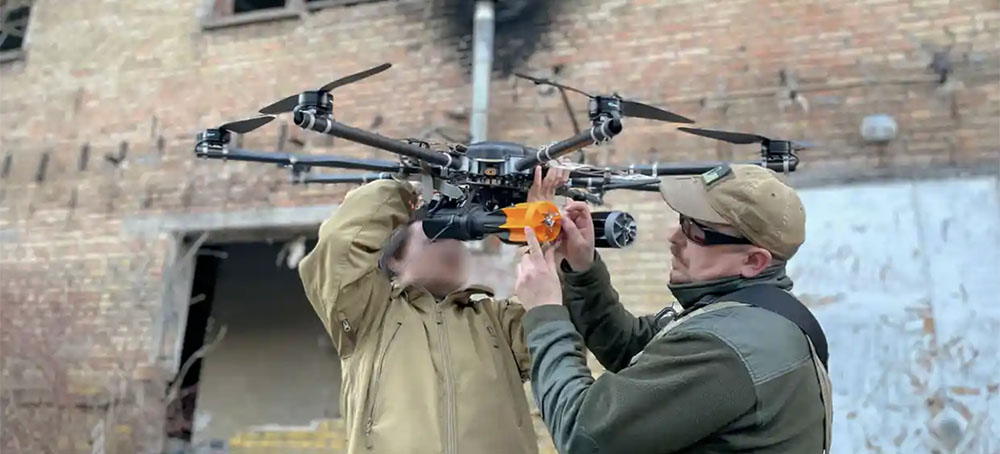 A drone is assembled by the Aerorozvidka unit. (photo: Aerorozvidka)
A drone is assembled by the Aerorozvidka unit. (photo: Aerorozvidka)
Special IT force of 30 soldiers on quad bikes is vital part of Ukraine’s defence, but forced to crowdfund for supplies
But the convoy of armoured vehicles and supply trucks ground to a halt within days, and the offensive failed, in significant part because of a series of night ambushes carried out by a team of 30 Ukrainian special forces and drone operators on quad bikes, according to a Ukrainian commander.
The drone operators were drawn from an air reconnaissance unit, Aerorozvidka, which began eight years ago as a group of volunteer IT specialists and hobbyists designing their own machines and has evolved into an essential element in Ukraine’s successful David-and-Goliath resistance.
However, while Ukraine’s western backers have supplied thousands of anti-tank and anti-aircraft missiles and other military equipment, Aerorozvidka has been forced to resort to crowdfunding and a network of personal contacts in order to keep going, by getting hold of components such as advanced modems and thermal imaging cameras, in the face of export controls that prohibit them being sent to Ukraine.
The unit’s commander, Lt Col Yaroslav Honchar, gave an account of the ambush near the town of Ivankiv that helped stop the vast, lumbering Russian offensive in its tracks. He said the Ukrainian fighters on quad bikes were able to approach the advancing Russian column at night by riding through the forest on either side of the road leading south towards Kyiv from the direction of Chernobyl.
The Ukrainian soldiers were equipped with night vision goggles, sniper rifles, remotely detonated mines, drones equipped with thermal imaging cameras and others capable of dropping small 1.5kg bombs.
“This one little unit in the night destroyed two or three vehicles at the head of this convoy, and after that it was stuck. They stayed there two more nights, and [destroyed] many vehicles,” Honchar said.
The Russians broke the column into smaller units to try to make headway towards the Ukrainian capital, but the same assault team was able to mount an attack on its supply depot, he claimed, crippling the Russians’ capacity to advance.
“The first echelon of the Russian force was stuck without heat, without oil, without bombs and without gas. And it all happened because of the work of 30 people,” Honchar said.
The Aerorozvidka unit also claims to have helped defeat a Russian airborne attack on Hostomel airport, just north-west of Kyiv, in the first day of the war, using drones to locate, target and shell about 200 Russian paratroopers concealed at one end of the airfield.
“That contributed largely to the fact that they could not use this airfield for further development of their attack,” saaid Lt Taras, one of Honchar’s aides.
Not all the details of these claims could be independently verified, but US defence officials have said that Ukrainian attacks contributed to the halting of the armoured column around Ivankiv. The huge amount of aerial combat footage published by the Ukrainians underlines the importance of drones to their resistance.
The unit was started by young university-educated Ukrainians who had been part of the 2014 Maidan uprising and volunteered to use their technical skills in the resistance against the first Russian invasion in Crimea and the Donbas region. Its founder, Volodymyr Kochetkov-Sukach, was an investment banker who was killed in action in 2015 in Donbas – a reminder of the high risks involved. The Russians can latch on to the drone’s electronic signature and quickly strike with mortars, so the Aerorozvidka teams have to launch and run.
Honchar is an ex-soldier turned IT marketing consultant, who returned to the army after the first Russian invasion. Taras, who asked not to use his surname, was a management consultant, who specialised in fundraising for the unit and only joined full-time as a combatant in February.
In its early days, the unit used commercial surveillance drones, but its team of engineers, software designers and drone enthusiasts later developed their own designs.
They built a range of surveillance drones, as well as large 1.5-metre eight-rotor machines capable of dropping bombs and rocket-propelled anti-tank grenades, and created a system called Delta, a network of sensors along the frontlines that fed into a digital map so commanders could see enemy movements as they happened. It now uses the Starlink satellite system, supplied by Elon Musk, to feed live data to Ukrainian artillery units, allowing them to zero in on Russian targets.
The unit was disbanded in 2019 by the then defence minister, but it was hastily revived in October last year as the Russian invasion threat loomed.
The ability to maintain an aerial view of Russian movements has been critical to the success of Ukraine’s guerrilla-style tactics. But Aerorozvidka’s efforts to expand, and to replace lost equipment, have been hindered by a limited supply of drones and components, and efforts to secure them through defence ministry procurement have produced little, partly because they are a recent addition to the armed forces and still considered outsiders.
Furthermore, some of the advanced modems and thermal-imaging cameras made in the US and Canada are subject to export controls, so they have resorted to crowdfunding and asking a global network of friends and supporters to find them on eBay or other websites.
Marina Borozna, who was an economics student at university with Taras, is exploring ways of buying what the unit needs and finding routes to get the supplies across the border.
“I know there are people who want to help them fight, people who want to do a bit more than the humanitarian aid,” Borozna said. “If you want to address the root cause of this human suffering, you’ve got to defeat the Russian invasion. Aerorozvidka makes a huge difference and they need our support.”
Her partner, Klaus Hentrich, a molecular biologist in Cambridge, is also helping the effort, drawing on his experience as a conscript in the German army.
“I was in an artillery reconnaissance unit myself, so I immediately realised the outsized impact that Aerorozvidka has. They effectively give eyes to their artillery,” Hentrich said. “Where we can make a difference is to rally international support, be it financial contributions, help to get harder-to-find technical components or donations of common civilian drones.”
The unit is also looking at ways to overcome Russian jamming, part of the electronic warfare being waged in Ukraine in parallel to the bombs, shells and missiles. At present, Aerorozvidka typically waits for the Russians turn off their jamming equipment to launch their own drones, and then it sends up its machines at the same time. The unit then concentrates its firepower on the electronic warfare vehicles.
Honchar describes these technological battles, and Aerorozvidka’s way of fighting, as the future of warfare, in which swarms of small teams networked together by mutual trust and advanced communications can overwhelm a bigger and more heavily armed adversary.
“We are like a hive of bees,” he said. “One bee is nothing, but if you are faced with a thousand, it can defeat a big force. We are like bees, but we work at night.”
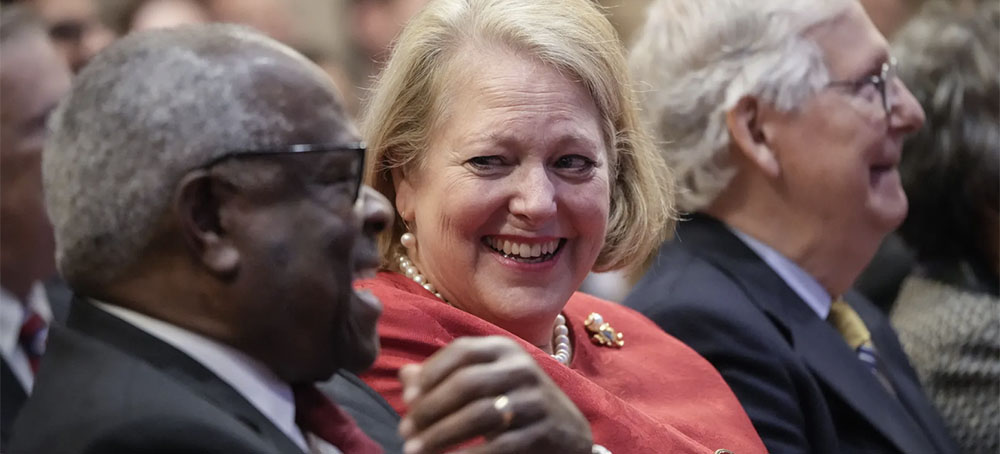 Justice Clarence Thomas sits with his wife Ginni and Senate Minority Leader Mitch McConnell at the Heritage Foundation on October 21, 2021, in Washington, DC. (photo: Drew Angerer/Getty Images)
Justice Clarence Thomas sits with his wife Ginni and Senate Minority Leader Mitch McConnell at the Heritage Foundation on October 21, 2021, in Washington, DC. (photo: Drew Angerer/Getty Images)
Like wife, like husband.
In January, the Supreme Court permitted the US House committee investigating the January 6 attacks on the Capitol to obtain hundreds of pages of White House records that may shine a light on former President Donald Trump’s efforts to thwart the peaceful transfer of power to Biden. These records may or may not contain additional evidence linking Ginni Thomas to January 6.
If Clarence Thomas had his way, the House committee and the public would never know. Thomas was the only justice to publicly dissent from the Supreme Court’s decision to let the House committee obtain these records — though he offered no explanation for why he dissented.
But here’s the thing: Yes, Thomas’s vote in this case, Trump v. Thompson, may have been an underhanded effort to protect his own wife. But his vote in Trump was entirely consistent with his record in cases where his spouse does not have a personal interest.
In more than three decades on the Supreme Court, Thomas has consistently voted to make it harder for many Americans to have their vote count; to erode institutions, like a free press, that are essential to democracy; and to dismantle nearly a century’s worth of democratically enacted laws on spurious constitutional grounds. Thomas’s opposition to democracy is not rooted in nepotism. It appears to be quite principled.
Among other things, Thomas is the only sitting justice who voted to install a Republican president in Bush v. Gore (2000) — although three other current justices were part of Republican George W. Bush’s legal team in that case. Thomas would allow Republican administrations to deactivate the entire Voting Rights Act so long as they are in power. He would strip journalists of First Amendment rights that allow them to safely provide critical coverage of government officials. And he would invalidate a long list of laws including the federal bans on child labor and on whites-only lunch counters, based on a widely rejected reading of the constitutional provision that grants Congress most of its power over the private sector.
No matter how the scandal with his wife’s texts shakes out, it’s worth remembering how the Court’s longest-serving justice would shape the world. In Clarence Thomas’s America, elections would be skewed so heavily in the Republican Party’s favor that Democrats will struggle to ever gain power. And if Democrats somehow do manage to squeak into office, Thomas would ensure that they cannot govern.
Thomas v. free and fair elections
The Supreme Court’s Republican majority, in Justice Elena Kagan’s words, “has treated no statute worse” than the Voting Rights Act.
It’s an astonishing attack on liberal democracy. The Voting Rights Act was America’s first meaningful attempt since Reconstruction to ensure that Black citizens could participate equally in selecting their own leaders. And, when it was fully in effect, it was a breathtakingly effective law. Just two years after President Lyndon Johnson signed the Voting Rights Act into law, Black voter registration rates in Mississippi skyrocketed from 6.7 percent to nearly 60 percent.
And yet, since its 2013 decision in Shelby County v. Holder, the Court has systematically dismantled the Voting Rights Act’s key provisions. It hamstrung the law’s “preclearance” provision, which required federal officials to screen voting laws in states with a history of racist election practices to ensure that those laws do not discriminate. It imposed such a high burden of proof on voting rights plaintiffs alleging intentional discrimination that such cases are now virtually impossible to win. And the Court has fabricated limits on the Voting Rights Act that appear nowhere in the law’s text, such as a presumption that voting restrictions that were common in 1982 are valid.
Justice Thomas supported all of these efforts to weaken the Voting Rights Act, a law that arguably did more than any statute in American history to dismantle Jim Crow, But he’s also consistently urged his Court to go much further. It’s unclear whether the Voting Rights Act retains any real force after its many harrowing encounters with the Roberts Court, but Thomas would all but ensure that the law is meaningless.
In the late 1960s, just a few years after the Voting Rights Act became law, the Supreme Court recognized that the law “was aimed at the subtle, as well as the obvious, state regulations which have the effect of denying citizens their right to vote because of their race.”
Imagine, for example, a city where 60 percent of the population is white, and 40 percent is Black. Now imagine that the city draws gerrymandered districts which ensure that white voters will be a majority in every city council district. In such a place Black voters might nominally possess the right to vote, but any vote cast by a Black person would be meaningless if the white majority hangs together to deny power to the Black minority’s preferred candidates.
To prevent these kinds of subtle attacks on the right to vote, the Supreme Court has, for more than half a century, understood the Voting Rights Act to prohibit “vote dilution” — that is, laws that diminish the power of voters of color without formally stripping them of the right to vote altogether. Concurring in the judgment in Holder v. Hall (1994), however, Thomas argued that the Court should abolish vote dilution claims, and effectively allow states to deny voting rights to certain racial groups so long as the state does it with a degree of subtlety.
In Holder, a majority of the Court concluded that vote dilution claims could not be used to challenge the number of people who sit on a governing body, but only Justice Antonin Scalia joined Thomas’s opinion seeking to shut down vote dilution lawsuits altogether.
“Properly understood,” Thomas claimed, the Voting Rights Act only forbids “practices that affect minority citizens’ access to the ballot.” “Districting systems and electoral mechanisms that may affect the ‘weight’ given to a ballot,” Thomas continued, “are simply beyond the purview of the Act.”
Thus, a state would be free to lock voters of a particular race out of power entirely, just so long as those voters were allowed to perform the meaningless act of submitting a ballot in an election that their preferred candidate cannot possibly win.
More recently, in Brnovich v. Democratic National Committee (2021), Thomas joined an opinion by Justice Neil Gorsuch which suggested that no private party is allowed to bring a lawsuit under the Voting Rights Act — only the US Justice Department could do so.
As the Supreme Court explained in Allen v. State Board of Elections (1969), such an approach would severely hamper the law’s effectiveness, even if the Justice Department is committed to protecting voting rights. “The Attorney General has a limited staff,” the Court noted in Allen, “and often might be unable to uncover quickly” new state policies that target voters of color.
And there’s no guarantee that the Justice Department will be led by people who care about voting rights. One result of the approach Thomas endorsed in Brnovich is that, in a Republican administration, the Voting Rights Act could cease to function altogether.
Thomas was also an early proponent of the so-called “independent state legislature doctrine,” a theory that would allow state lawmakers to ignore their state constitution altogether when writing the laws governing congressional and presidential elections. In its strongest form, this doctrine would allow a state legislature to simply gift a state’s electoral votes to the Republican presidential candidate (or, in theory, to any presidential candidate), regardless of what the people of the state, the state’s governor, or the state’s supreme court has to say about it.
Thomas would dismantle the freedom of the press
Even if states hold nominally free and fair elections where every vote counts equally, elections lose much of their import if voters cannot learn which candidates support their preferred policies or know what choices politicians make once elected. This is why a free press is essential to any democracy, because the right to vote means little if voters can’t determine who to vote for.
And yet, Thomas called for his Court to overrule New York Times v. Sullivan (1964), the single most important decision enabling journalists to report the news without facing intimidation or sanction from government officials.
In 1960, civil rights activists aligned with Martin Luther King, Jr. ran an advertisement in the New York Times, which alleged that Alabama police used brutal tactics to suppress student protests. The ad, however, contained some minor factual errors. It misidentified the song that protesters sang at a particular demonstration, for example, and it also claimed that police had arrested King seven times, when he’d in fact only been arrested four times.
Pointing to these small errors, a Jim Crow police official won a $500,000 verdict against the Times in an Alabama court — close to $5 million in 2022 dollars. Had this verdict stood, it would have chilled journalism of all kinds, because it would have meant that any newspaper or other outlet that prints even very small factual mistakes could have been hit with a verdict large enough to bankrupt the outlet.
The New York Times decision, however, prevented this outcome by holding that the First Amendment imposes limits on defamation lawsuits. When someone speaks about a public figure and about a matter of public concern, the Court held, they cannot be held liable for making false statements unless that statement was made “with knowledge that it was false or with reckless disregard of whether it was false or not.”
Thomas argued in McKee v. Cosby (2019) that New York Times should be overruled. Indeed, Thomas’s opinion suggests that states should be free to define their own defamation law free of constitutional constraints. “The States are perfectly capable of striking an acceptable balance between encouraging robust public discourse and providing a meaningful remedy for reputational harm,” Thomas wrote.
If this approach were to prevail, state officials could once again use malicious defamation lawsuits to target journalists. Suppose, for example, that I mistakenly report that “500 people attended a rally protesting Florida Gov. Ron DeSantis,” when in fact the rally was attended by only 450 people. If states can set their own defamation laws, free of constitutional constraint, then DeSantis could sue me and Vox Media for millions, endangering our ability to continue reporting on DeSantis — and potentially bankrupting Vox in the process.
Thomas would make the winner of a federal election largely irrelevant
Thomas’s final avenue of attack on American democracy is perhaps even more subtle and insidious.
Under Justice Thomas’s approach, the winner of a federal election is largely irrelevant, because the federal government would be stripped of its authority to do nearly anything that the current majority on the Court disapproves of.
That’s because his views on the balance of power among the three branches of the federal government, and on the balance of power between Congress and the states, would leave the national government little more than an empty husk.
To back up: Numerous federal statutes lay out broad policy objectives — such as power plants should use the best available technology to reduce emissions or health insurers shall cover vaccines that are recommended by medical experts — then delegates the task of implementing these objections to a federal agency. One advantage of this approach is that it allows the government to be dynamic. As new emissions reduction technology emerges, for example, the Environmental Protection Agency can update the relevant regulations to ensure that power plants remain state-of-the-art. Another is that it allows democratically elected lawmakers — with a diverse set of backgrounds — to set policy goals, but also leaves the difficult details of implementing these goals to officials with specialized expertise.
In recent years, however, the Court’s Republican appointees have given themselves a veto power over all of these agency regulations. Relying on vague doctrines that appear nowhere in the Constitution, such as the “major questions” doctrine or “nondelegation,” the Court has claimed the power to strike down regulations that a majority of its members disapprove of.
Thomas, however, would go even further. In a 2015 opinion, Thomas argued that any federal law that permits an agency to exercise “policy discretion” is unconstitutional. Thus, Congress would be forbidden from creating a modern environmental protection regime, or a dynamic regime where medical experts can quickly make new vaccines available to the public, no matter how the American people vote in congressional elections.
Thomas would also strike down huge swaths of federal law governing the workplace and other private businesses.
The Constitution permits Congress to “regulate commerce ... among the several states.” This provision is what allows the federal government to protect the right to unionize, to ban child labor, to set the minimum wage, to prohibit discrimination by private companies, and to regulate health insurers — among many other things.
Concurring in United States v. Lopez (1995), however, Thomas endorsed the legal reasoning the Court used in Hammer v. Dagenhart (1918), an anti-canonical decision striking down federal child labor laws. And he’s restated this view in at least three other opinions since Lopez.
For those who want a deep dive, I’ve written about the full implications of Thomas’s opinion in Lopez at considerable length. But the short version is that Thomas’s approach endangers much of the New Deal, the Great Society, and decades of other regulations of private businesses which now form a backbone of American society.
Again, under Thomas’s approach, it is highly doubtful that the federal ban on whites-only lunch counters, which the Supreme Court held was a valid exercise of Congress’s power to regulate commerce in Katzenbach v. McClung (1964), could survive.
Thomas, in other words, imagines a world where state lawmakers have broad authority to skew elections in their party’s favor. He would strip journalists of the First Amendment protections they need to do their job safely. And, if a left-of-center government somehow did emerge despite these constraints, Thomas would strip that government of most of its authority to govern.
Ultimate power would rest with the Supreme Court, and its panel of unelected judges who serve for life, not with the American people. And Thomas would wield that power to turn back the clock on American law nearly an entire century.
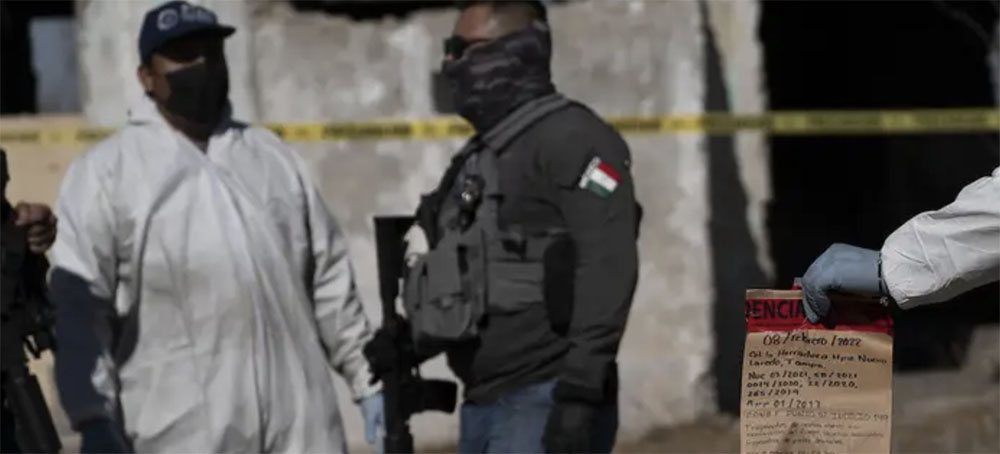 Authorities investigate a crime scene in Nuevo Laredo, Mexico, on Feb. 8, 2022. (photo: Marco Ugarte/AP)
Authorities investigate a crime scene in Nuevo Laredo, Mexico, on Feb. 8, 2022. (photo: Marco Ugarte/AP)
Immigrants sent back to dangerous border towns in Mexico while trying to obtain asylum face gang violence, rape, and kidnapping.
In the email, the official says that Mexican government workers were not able to fill gas tanks as criminal networks were threatening to “burn down any station” caught selling to them.
The email describes how immigrants escorted in the area under the protection of the Mexican National Guard were attracting a lot of attention, which could put them in the crosshairs of criminal networks angry with the government.
Under the US program, known as Remain in Mexico, immigrants are sent back to Mexico where they are forced to remain for the duration of their asylum cases. Those turned back to Nuevo Laredo are offered bus trips to other areas in Mexico with the protection of the Mexican National Guard. The immigrants are later brought back inside the US, also with National Guard protection, for court hearings.
“[In] the event that the criminal networks want to retaliate against [the government of Mexico] … migrants could be caught in the middle,” Stephanie Syptak-Ramnath, a lead official in the US embassy in Mexico City, wrote in the email, which was intended for Blas Nuñez-Neto, the top DHS official running border policies for the Biden administration.
The latest spate of violence in Nuevo Laredo began when Juan Gerardo Treviño, who faced extradition to the US on alleged crimes such as murder, was arrested by the Mexican government, according to Reuters. Afterward, trailers were burned in the city and even the US consulate was struck with gunfire, prompting it to shut down.
As of March 18, US government personnel were under curfews and movement restrictions, according to a security alert on the local consul general’s website. The State Department is also recommending that American travelers not travel to the region, reporting that gun battles, homicides, and kidnapping were common along the border.
“Heavily armed members of criminal groups often patrol areas of the state and operate with impunity, particularly along the border region from Reynosa to Nuevo Laredo. In these areas, local law enforcement has limited capacity to respond to incidents of crime,” the recommendation states.
The email reviewed by BuzzFeed News documents the severe security problems plaguing the Mexican border city, which sits across from Laredo in Texas. But it also highlights the inherent complications surrounding a program that began under the Trump administration. Late last year, President Joe Biden was forced to resume the program, also known as the Migration Protection Protocols (MPP), following a federal court order.
A DHS official confirmed that the agency had “temporarily paused the court-ordered reimplementation of MPP in the Laredo sector to ensure the safety of migrants in light of recent violence in Nuevo Laredo.” The email obtained by BuzzFeed News recommends resuming sending immigrants to Nuevo Laredo on March 28 if the security situation has been resolved.
Since the return of Remain in Mexico, hundreds of immigrants have been forced back across the border, with a small portion of them being sent to Nuevo Laredo. Immigrant advocates, along with those within the Biden administration, have long criticized the program as violating the law by blocking immigrants from full access to the US asylum system. Administration officials have also said the program places immigrants in dangerous situations in Mexico where the US is limited in its ability to help.
“Secretary of Homeland Security Alejandro N. Mayorkas has repeatedly stated that MPP has endemic flaws, imposed unjustifiable human costs, pulled resources and personnel away from other priority efforts, and failed to address the root causes of irregular migration. DHS, however, is under a court order to reimplement MPP, which it continues to fight in the courts, including in a challenge before the Supreme Court,” a DHS spokesperson said in a statement. “In the interim, the Department is required to abide by the order to re-implement the program in good faith. As it does so, the Department is committed to implementing MPP in the most humane way possible.”
Immigrant advocates have felt that Remain in Mexico had largely avoided the level of outrage it deserved after more than 60,000 asylum-seekers were sent back as part of former president Donald Trump’s plan to deter migration at the southern border. While in Mexico, those immigrants faced rape, kidnappings, and murder, according to groups who documented the problems.
The email to Nuñez-Neto documents how the conditions in parts of the Mexican border continue to remain precarious.
“I think this highlights once again how dangerous this particular city is,” said Stephanie Leutert, a former Biden administration official and the director of the Central America and Mexico Policy Initiative at the University of Texas. “We know that the entire border can be really dangerous for migrants, but Nuevo Laredo has a unique security environment where people returned there are especially vulnerable for crimes by the criminal group that controls the territory.”
Leutert wrote a report in December that found that there were more than 130 people who had been kidnapped in Nuevo Laredo after being sent there under the Remain in Mexico program. Between 2019 and 2021, more than 11,500 people were sent to the border city, according to the report. Leutert found that the kidnapped immigrants included families and people from Honduras, Cuba, Venezuela, and elsewhere. She also documented how those forced back under Title 42 — an obscure public health law that was invoked to stop the spread of COVID — had also been kidnapped.
“With each new U.S. policy that sends individuals back to Nuevo Laredo, there is a new migrant population that is at-risk for being kidnapped,” she wrote. “Over the long term, the only way to reduce these kidnappings is for the Mexican government to foster sustainable improvements in the security situation or for the U.S. government to stop returning people to the city. However, in the meantime, migrant kidnappings in Nuevo Laredo are likely to continue.”
The return of the Remain in Mexico policy was something the Biden administration has long opposed publicly.
In August, US District Judge Matthew Kacsmaryk ordered the government to restart the program until it could be rescinded in compliance with the Administrative Procedure Act. His order went into effect shortly afterward.
Earlier in 2021, the Biden administration began to undo MPP by allowing thousands of people caught up in Remain in Mexico to come to the US. And in June, Mayorkas issued a memo officially ending the policy. The case has since moved to the Supreme Court, which will hear arguments later this spring.
The program has also come under heavy criticism within the government. The union representing asylum officers wrote in a statement that the policy’s return will make officers “complicit in violations of U.S. federal law and binding international treaty obligations of non-refoulement that they have sworn to uphold.”
The Biden administration has highlighted many changes with the new version of Remain in Mexico. These include improved access to legal representatives, more information about the program given to immigrants, and a speedier court hearing process. But perhaps most consequential will be the practice of border officials asking questions to figure out if immigrants are fearful of being returned to Mexico, which was not the case under Trump. Immigrants who say yes will have the opportunity to be screened by asylum officers to prove their claim.
Under the new DHS guidance, vulnerable immigrants, such as those with known physical or mental issues or of advanced age, will be exempted from Remain in Mexico. An internal government report obtained by BuzzFeed News found that while those with “known physical/mental health issues” were also prohibited under the Trump version of MPP from being sent back, border officials placed them in the program anyway.
The Trump administration implemented the controversial program in early 2019 amid a surge of families crossing the border and claiming asylum. At the time, the US was seeing upward of 100,000 border crossings a month.
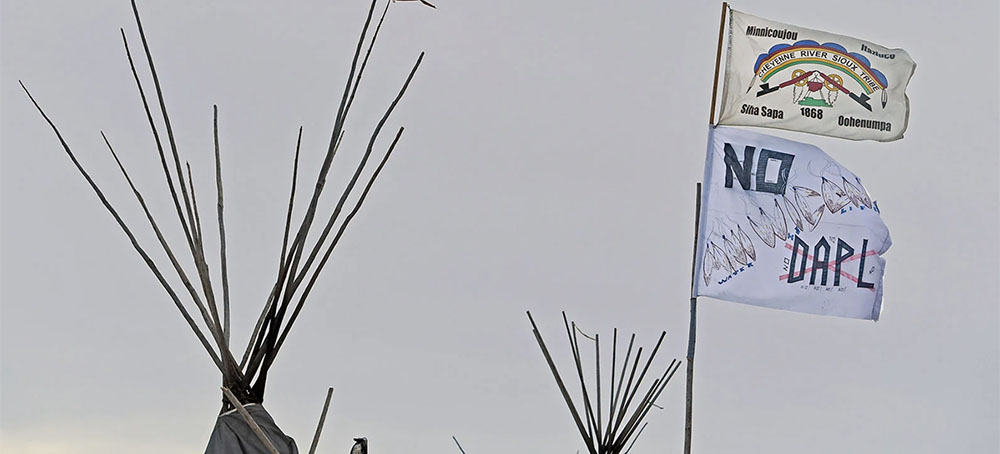 The Dakota Access Pipeline protest flags. (photo: Helen H. Richardson/The Denver Post/Getty Images)
The Dakota Access Pipeline protest flags. (photo: Helen H. Richardson/The Denver Post/Getty Images)
Authors say the study could be pivotal in stopping DAPL.
The report, written by NDN Collective, an Indigenous nonprofit, provides the first comprehensive timeline of the controversial pipeline’s legal and environmental violations. Working with a team of engineers, the report’s authors included new information about oil quality, spills, leakage, and faulty infrastructure that NDN Collective says could be pivotal in the ongoing battle to stop the pipeline.
The report comes as tribes await the Army Corps of Engineers to complete a new, court-mandated Environmental Impact Statement (EIS) on a section of pipeline under Lake Oahe, a reservoir on the Missouri River to which tribes have treaty rights. The EIS is expected to be released in September, after which a public comment period will open. NDN Collective, tribes, and other environmental groups are also calling on the Biden administration to shut down the pipeline. Meanwhile, the pipeline remains operational, carrying 750,000 barrels of oil a day.
“This report shows how the Army Corps of Engineers violated their own processes, and continues to violate our human rights for the benefit of a destructive, violent, and extractive energy company,” said Nick Tilsen, Oglala Lakota and CEO of NDN Collective. “We cannot sit on the sidelines with this information. It’s time for accountability and it’s time to shut down the Dakota Access Pipeline, once and for all.”
Since 2016, the pipeline has been the focus of an international effort by Indigenous people and environmental activists to stop it. Construction began in 2016 and was completed in 2017.
“If the tribes were equipped with this information back in 2015, we could have won the fight. The fight for DAPL would have been very different,” said Jade Begay, Diné and Tesuque Pueblo of New Mexico, Climate Justice Campaign Director at NDN Collective.
Begay said that the report can complement the work of activists on the ground and serve as a tool to fight the pipeline on a policy level but stresses that the responsibility lies with the company, agencies, and federal government to complete accurate studies and share the information with stakeholders.
“Infrastructure should be done right from the beginning,” she said. “Vulnerable communities that are often Black, brown and Indigenous should not have to bear the burden of doing the work for these entities and agencies.”
Special Coverage: Ukraine, A Historic Resistance
READ MORE
Follow us on facebook and twitter!
PO Box 2043 / Citrus Heights, CA 95611

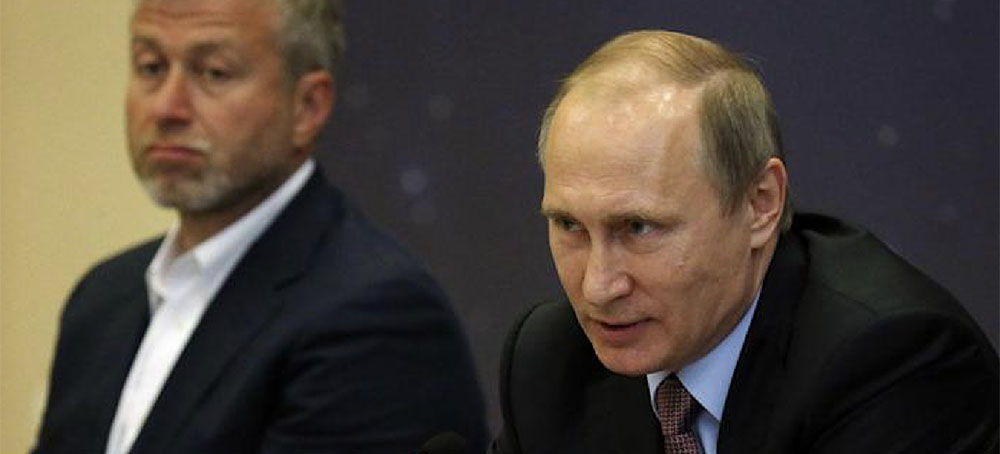

No comments:
Post a Comment
Note: Only a member of this blog may post a comment.